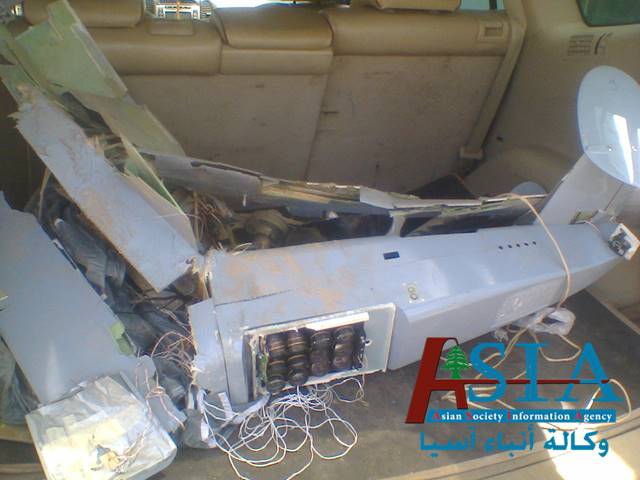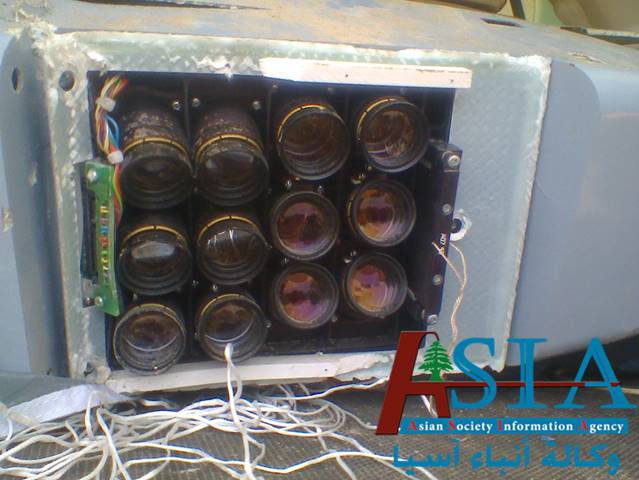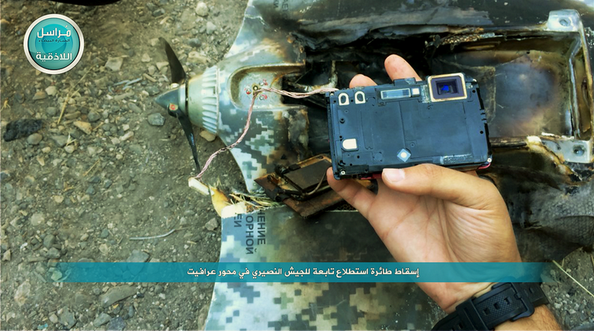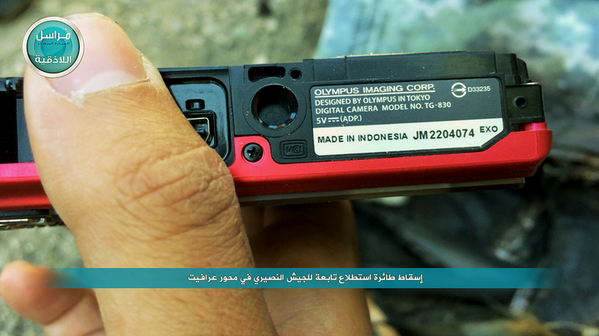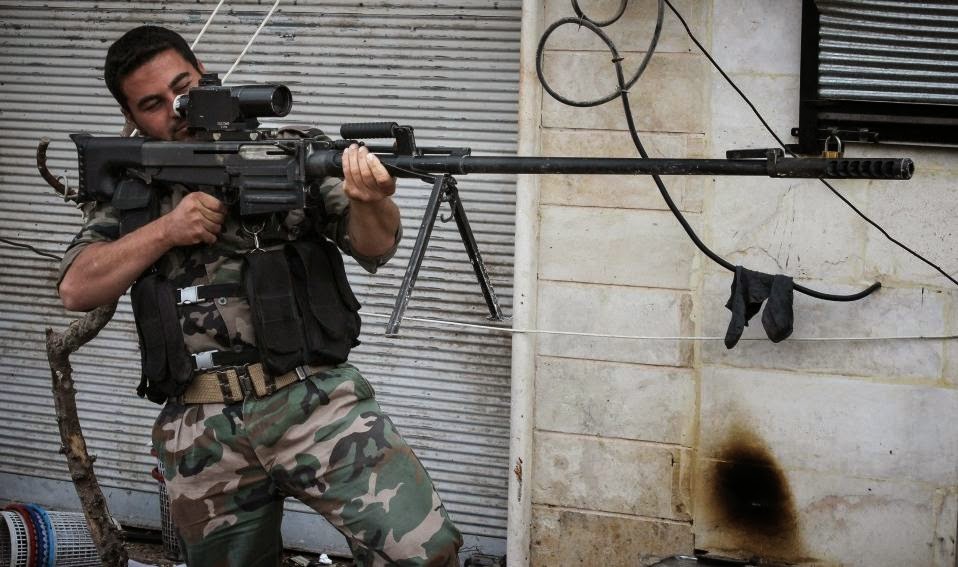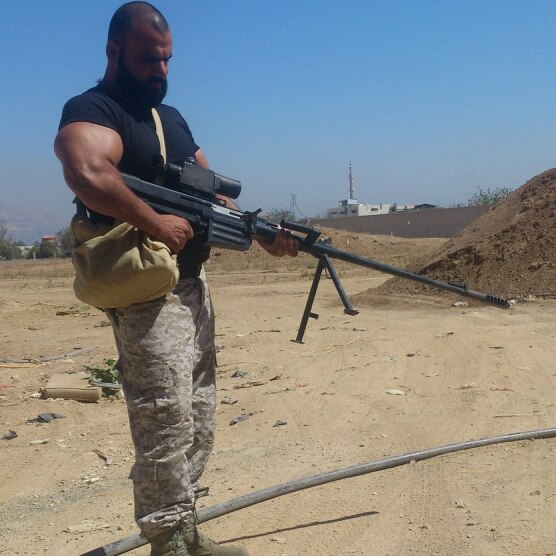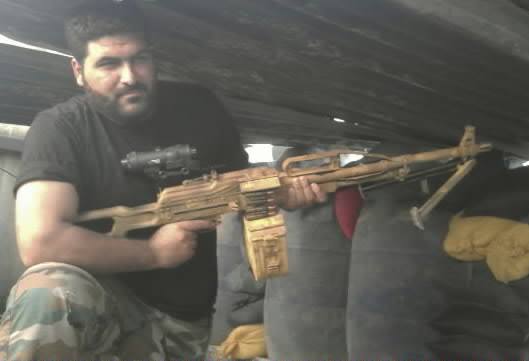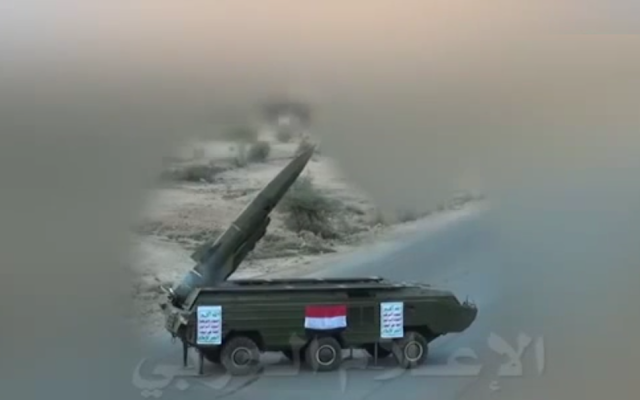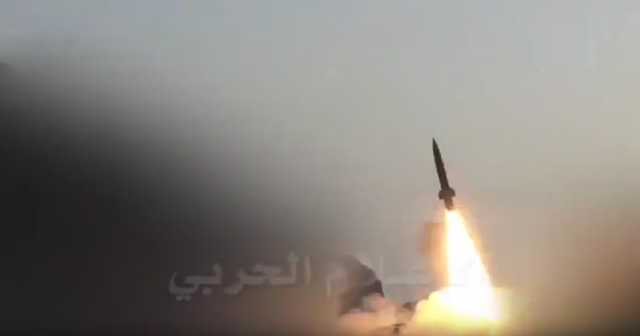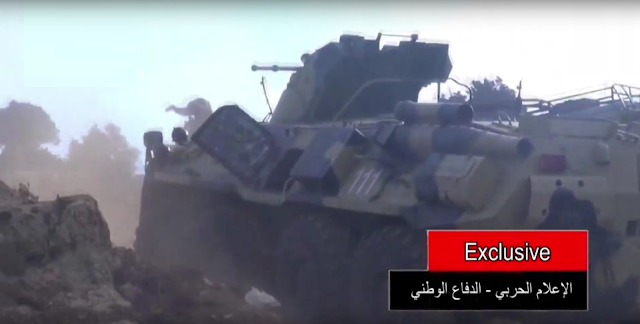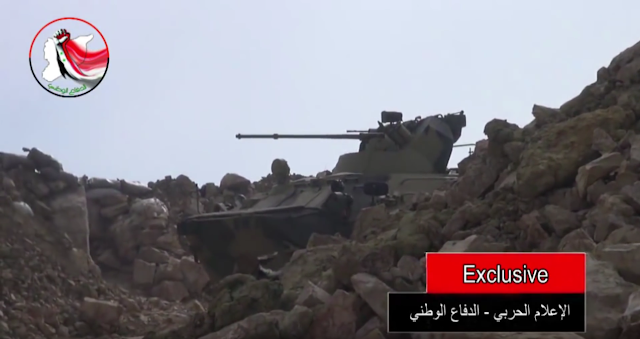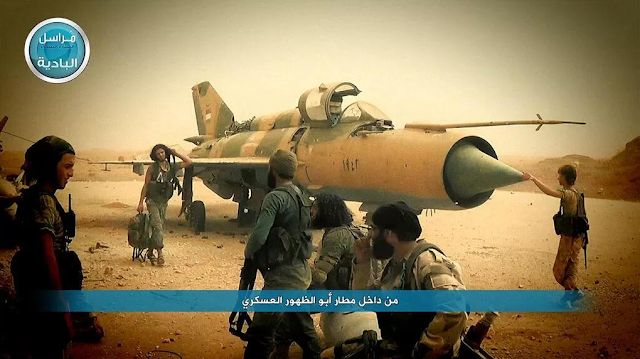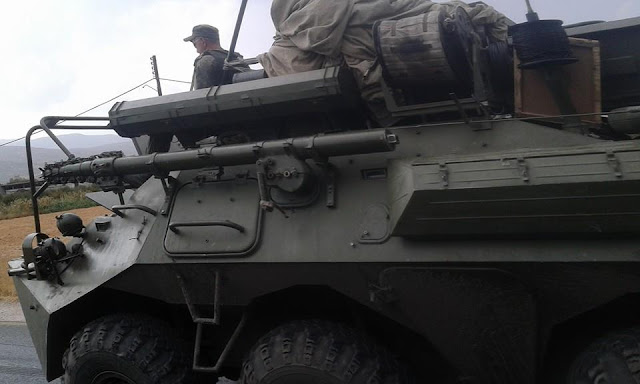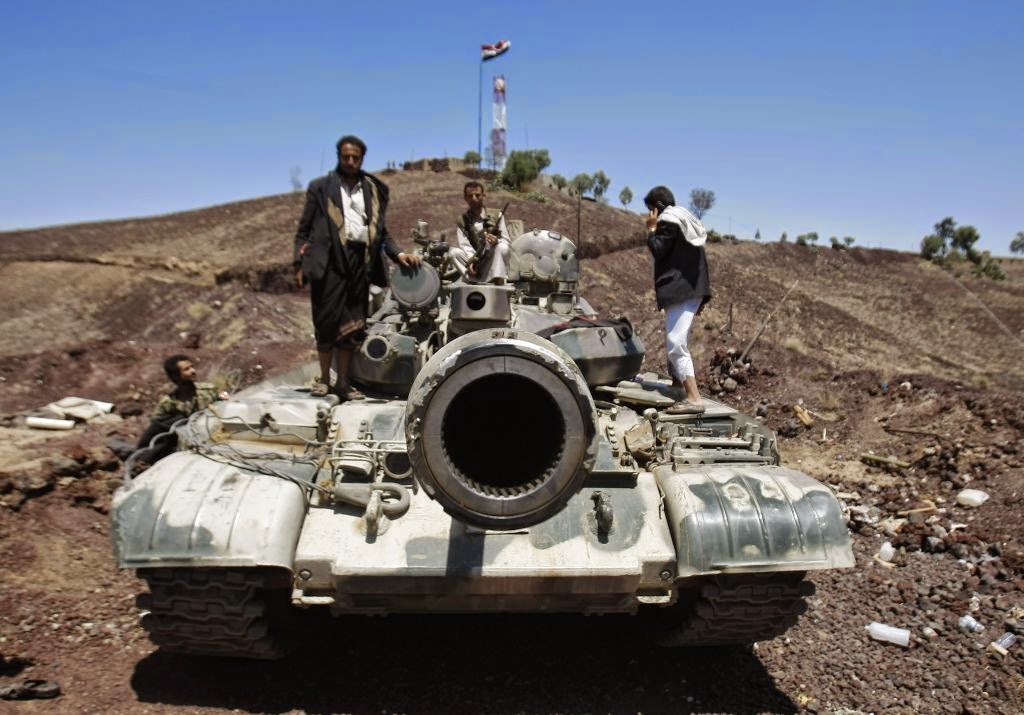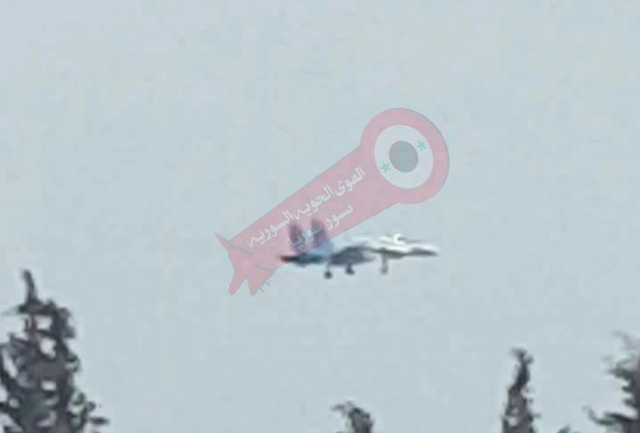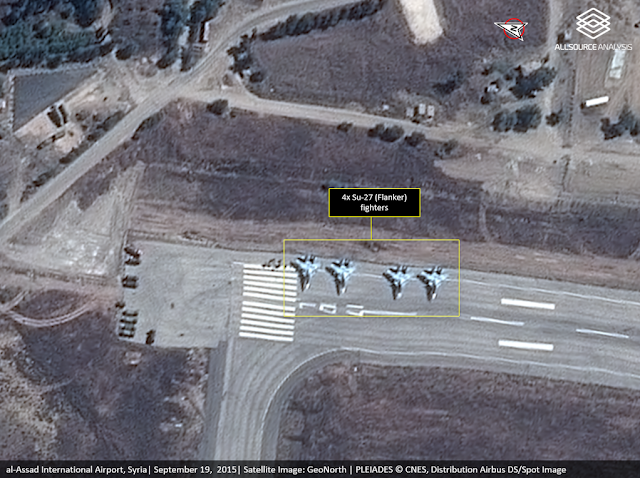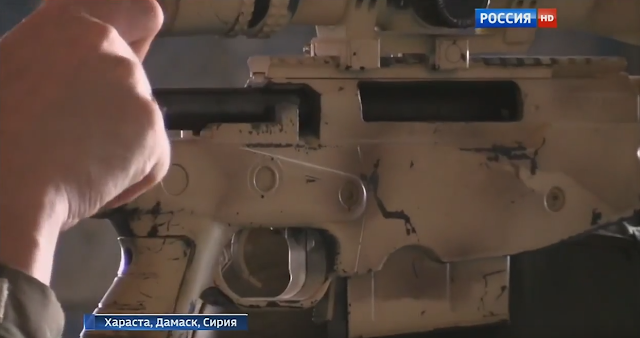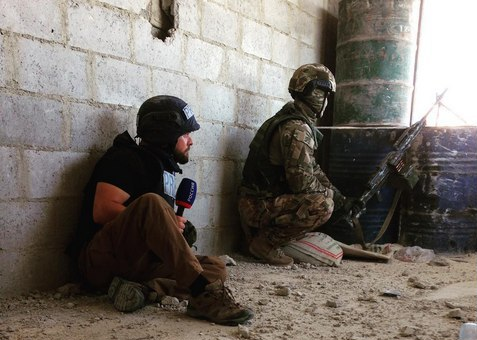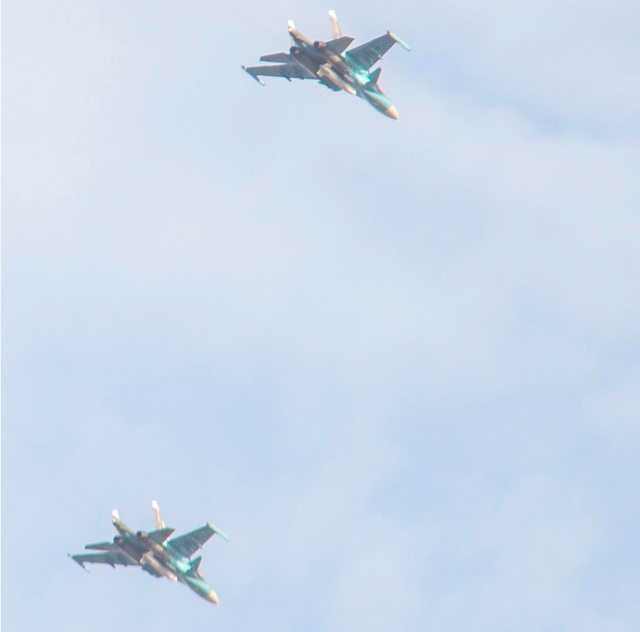Recently published images of two drones that fell near the village of Ruveysli near Kasab and Arafit near Jisr al-Shughour in the Lattakia Governorate on the 20th of July 2015 reveal that either Russia has supplied the regime with state-of-the-art unmanned aerial vehicles (UAVs) or that Russia has embarked on a small-scale drone surveillance programme over Syria. If the latter turns out to be the case, it could be part of their greater intelligence programme to provide the Syrian regime with up-to-date information on the rebels' status and strength, which first became known to the world after the capture of the Центр С - المركز س - Center SSIGINT (Signals Intelligence) facility near al-Hara, Daraa Governorate.
The UAV that crashed near Ruveysli, believed to be a yet unnamed variant of the Orlan-10 reconnaissance drone, is nearly identical to a previously seen type in the Ukraine, were at least one crashed in Ukrainian-held territory in May 2014. The basic Orlan-10 was also seen over the Ukraine, and several other types were also recovered after having crashed. The new variant of the Orlan-10 drone found in the Ukraine was sighted for the first time, and its technical details therefore remain yet unknown.
While the introduction of this type of UAV and its subsequent crash is noteworthy by itself, stunning coincidence has it that another recently acquired type of UAV crashed nearly forty-kilometers away just moments later. The second UAV, a Russian-made Eleron-3SV reconnaissance drone, was damaged by an onboard fire and crashed near the JaN-held town of Arafit, and despite the fire-damage was still relatively intact.
The sudden appearance of two types of Russian unmanned aerial vehicles shows the extent of support from the Russians to the Syrian regime, and is likely a result of the loss of Idlib Governorate to the rebels and the city of Tadmur (Palmyra) and its surroundings to the fighters of the Islamic State in the past months, after which many Pro-Assadists already claimed that the recent setbacks would herald a new chapter of Russian and Iranian support to the regime.
The extent of involvement of the Russians in this new Syrian drone programme is open to debate. Although one could argue that the Syrian Armed Forces or one of the Syrian Intelligence Agencies are operating these drones, Russian involvement in operating these UAVs should not be ruled out. First and foremost, it seems implausible the regime would acquire two completely new and expensive platforms, requiring extensive training to operate them and to process the acquired data into useful information for the forces on the ground, when they can already deploy Iranian-delivered and operated Mohajer, Yasir and Shahed 129 drones currently present in Syria to the Lattakia Governorate with little effort.Secondly, Russia's involvement in the Syrian intelligence field continues to be greatly underestimated, the sudden discovery of Center S last year serving as a testament to that fact. Thirdly, the fact that both drones have been produced post-2010 for the Russian military and subsequently used over the Ukraine makes it seem unlikely they were exported to Syria this quickly, not in the least because it would mean exposing some of their newest technologies in the UAV field.
Center S, jointly operated by the Russian Osnaz GRU radio electronic intelligence agency, Iranian and Syrian Intelligence Agencies, was to provide Syria and Iran with situational awareness of the Middle East and Israel in particular, but focussed increasingly on Syrian domestic affairs shortly after the revolution and start of the Civil War. Center S became responsible for recording and decrypting radio communications from rebel groups inside Syria, providing the Syrian Arab Army (SyAA) with up-to-date information on the strength and upcoming offensives of rebels, and the Syrian Arab Air Force (SyAAF) with information on rebel meetings. Center S was thus at least partially responsible for the series of killings of rebel leaders by SyAAF airstrikes. Unsurprisingly, its loss to the fighters of the Free Syrian Army served the regime a heavy blow.
It is therefore highly likely that Russians are involved one way or the other in operating the recently delivered Orlan-10s and Eleron-3SVs in Syria.The establishment of an UAV unit with Russian equipment and specialists as opposed to the Iranian-led UAV units might have been offered to the regime after the recent loss of Idlib Governorate, which if progressed further, could seriously have threatened the regime's heartland: Lattakia.
The new variant of the Orlan-10 has a set of twelve cameras located in its fuselage, identical to the example that crashed in the Ukraine. With these cameras, the Oran-10 can create 3D maps of the battlefront to provide extremely detailed information on enemy movements and strongholds. It is believed that the equipment used on the Orlan-10 can be changed depending on the mission, for instance to accommodate a night vision apparatus.
The cover of the camera was blown off on the example found near Ruveysli in Syria but still intact on the one recovered in the Ukraine seen below:
A civilian Olympus camera was among the equipment found onboard the crashed Eleron-3SV.
Piloted by Russians or not, the presence of even a limited number of Oran-10s and Eleron-3SVs could turn out to be a true asset on top of the already operated drones for the regime forces fighting in the Lattakia Governorate, or if deployed elsewhere, in Syria as a whole.
The ever rising death toll and the indiscriminate use of banned weaponry including chemical ordnance evidently serves as no deterrent for Russia to continue delivering anything from small arms to tanks, multiple rocket launchers, spare parts for the SyAAF's fleet of fighter-bombers and now unmanned aerial vehicles.
Special thanks to Green lemon.
Recommended Articles
Captured Russian spy facility reveals the extent of Russian aid to the Assad regime
Russian espionage network in Syria exposed as more facilities are uncovered
The espionage triangle, Iran's involvement in the Russian espionage facilities in Syria
Iran deploying her newest drones to Syria: The Shahed 129
Iran deploying her newest drones to Syria: The Yasir UAV From Russia with Love, Syria's Vepr-12s
From Russia with Love, Syria's MTs-116Ms
From Russia with Love, Syria's AK-104s
From Russia with Love, Syria's AK-74Ms
From Russia with Love, Syria's 6S8s
